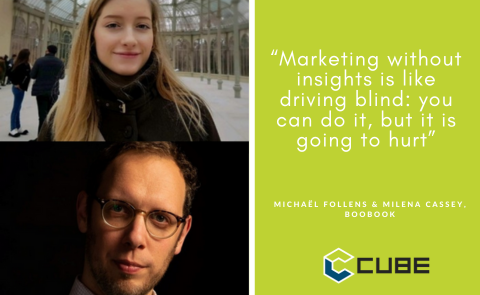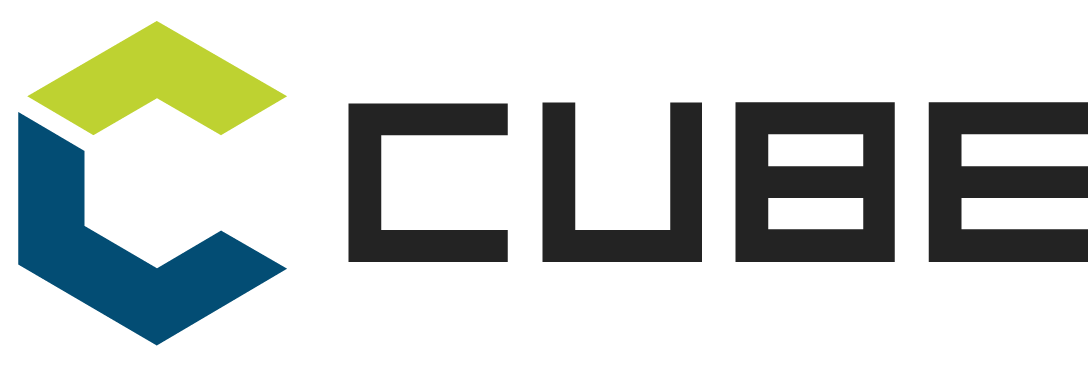
16 Apr “Marketing without insights is like driving blind: you can do it, but it is going to hurt”
At the BAM Student Congress in March, organised in the welcoming cinema rooms of Kinepolis Ghent, Boobook specialists Milena Casey and Michaël Follens gave an inspiring presentation on the transformative impact of consumer insights. Afterwards, they joined us to discuss their keynote, the importance of market research and some potentially disrupting trends in the sector.

Milena Casey works as a Research Executive at Boobook, her colleague Michaël Follens is an Insights Consultant. By presenting two tangible and impactful cases during the Student Congress, they successfully demonstrated the great strategic significance of consumer insights.
Although working in consumer insights is probably not the most popular job in marketing, it comes closest to board level and to making strategic decisions: is that a good summary and the message you wanted to convey to the students?
Milena Casey: “I would not say that it is not a popular job, it is just not very well known and quite misunderstood. We indeed made the point that you can have a very important strategic impact by working in insights, at a higher level than in a standard entry-level marketing job. Hopefully we succeeded in opening their hearts to consumer insights as a job.”
Michaël Follens: “We have to admit that marketing research and insights is not the sexiest sector in the marketing world, but that is why we tried to present the job in a more humorous way. When you look a bit further than all functions in promotion or marketing communication and think of the bigger marketing picture, then insights is the sector where it all begins.”
‘Not having consumer insights is like driving blind’, you mentioned on stage. Could you elaborate on that quote?
Casey: “Marketing without insights is like driving blind: you can do it, but it is going to hurt. Operating without data and without knowledge of what you are doing, not really understanding what your customers need or what price you should be setting, is operating blind. That is where we come in: we provide the data to back up or disprove the assumptions the client has. My favourite part of the job is to provide clarity to organizations.”
Follens: “As it indicates a certain balance, backing up is the perfect word here. On the one hand, you cannot make all your marketing or strategic decisions based on gut feeling or only internal data – which is still the case in a lot of companies, for a multitude of reasons. But on the other hand, it is not the best idea to see the data and insights as the one and only truth out there. It is an important and necessary add-on to industry and corporate experience, that helps you to make your decisions more confidently.”
It became clear that consumer insights play a role in all four P’s of Kotler’s marketing mix, which is quite unique. That seems like another strong argument for this field.
Casey: “Exactly. We used that as an example to illustrate that you can have a far-reaching and all-encompassing impact by working in insights, whether that is on product pricing, product design, promotion or place.”
Follens: “Next to that, we were looking for an appropriate hook, for a term that is familiar to these students. The 4 P’s is one of those classic models that is studied across generations. It was a valuable instrument to catch their attention and to integrate in our key message.”
The keynote was structured around two strong cases, the first on marketing flooring products and the second about the features in a bungalow park. Why these two cases?
Casey: “In each of these high-level examples, we had a strategic impact on all four P’s. These two cases ticked all Kotler’s main boxes and illustrated perfectly how powerful our profession can be.”
Follens: “Boobook is primarily known for profound pricing consultancy based on consumer data. That is our core business, but we always try to link pricing strategy to other important factors in the broader marketing strategy, such as the customer segmentation framework, brand perception and positioning, and product portfolio. These cases showed that holistic approach and many-sidedness in an appealing way.”
You discussed several types of analysis in your presentation. Are there some intriguing trends in that respect, maybe some new techniques that are emerging?
Casey: “Artificial intelligence is an interesting trend and a big topic in our industry at the moment. It increases the efficiency of various elements of our jobs. At the same time, it is a bit of a threat too. We now have to worry more about false respondents, for example.”
Follens: “AI helps, facilitates in many ways, but it cannot replace us – yet. Especially in qualitative research, there are quite some things going on. Translating text or speech to data, that is all very interesting. Next to that, as AI is showing its added value more and more when it comes to big data analysis and segmentation, its impact on quantitative research will definitely keep on growing. So we certainly try to keep our finger on the AI pulse.”
Data become more and more important in general. There are more data around as well. To what extent does that increasing flow of data help you in your job?
Casey: “It is very helpful. For exercises like segmentation, we sometimes work with clients that already have an extensive customer database. That means we have a strong starting point to create the segments and directly target their customers with the right kind of messaging.”
Do all these extra data points complicate your analyses in a certain way? Or is that where AI comes in?
Casey: “More data is not a bad thing, as long as you collect the right kind of data or make the right selection. If the data can complement what you have discovered through surveys, then it is very, very helpful.”
Follens: “More and more data is one thing, but the quality of data is something else. At the moment, our field partners are struggling more than before with data quality. The more AI and data emerge, the more data cleaning has to be done. The percentages of ‘bad data’, as we call it, speak for themselves. Luckily, we still outsmart bots and are able to get rid of most rubbish data.”
Are there other important evolutions in consumer insights we should know about?
Casey: “The part of the industry that is growing the fastest, is the consultancy aspect. Previously market research was mainly about the large companies doing a lot of data crunching, but not necessarily providing insights and consulting services. As those services are booming and actually our speciality, we are in a very good position.”
Follens: “That is exactly where the human added value will be. In a time where AI grows and facilitates the easy tasks, the added value of our sector lies in these more complex data interpretation tasks, based on human logic, experience and knowledge of consumer behaviour.”
